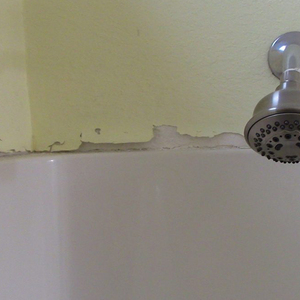Bathroom and Kitchen Sealant Made Simple
It's time for a lesson in watertight sealants from the Home Repair Tutor.
Sponsored by GE sealants
Join Jeff Patterson, Home Repair Tutor, as he adds important finishing touches to the bathroom and kitchen of a Midwest home. He offers expert tips on everything from ensuring a tight seal between a tile floor and a toilet fixture to installing a basket strainer in a kitchen sink. Plus, Jeff explains why silicone sealant is his go-to choice for kitchens and bathrooms.
Here’s the Transcript
Today we’re in the Midwest, and we’re wrapping up a whole-house remodel. As you know, the two most important parts of a home are the kitchen and the bath. We’re going to be using the GE Supreme Silicone Kitchen & Bath Sealant to wrap up some of those important details.
This first application, we’re going to be installing a basket strainer inside the kitchen sink, and what I need to do first is apply some silicone to the sink base. My goal is to apply a ¼-in. bead, so I’m just going to go ahead and apply this, and I want this to be as generous as possible.

The next step is to apply a ½-in. bead to the bottom of our basket strainer so that when the two meet, we have a continual bead of the silicone. Now what we’ll do is simply just place this down into the sink, push down, and you want to see the silicone squeeze out — that indicates a nice tight waterproof seal.
Before you put on the nut, you want to remove any of the excess silicone that’s squeezed out; I simply do that with my finger. Then we’ll just spin the nut on. Now we’re going to use an industrial wipe to clean all that off. It’s very simple and straightforward.
Working With Tile
For the next application, I’ve switched to white because I have a tile-to-window expansion joint. I need this to be expandable, and it has to be waterproof — that’s important if somebody leaves the window open and water comes through. I cut the applicator tube to be the same size as the biggest gap in the joint. That allows me to apply the perfect bead and then tool it to fit exactly in the joint.
In this final scenario, I’m going to apply silicone between the bottom of the toilet bowl and the tile floor because it’s required by code to keep the bathroom hygienic, and it’ll give the toilet a nice clean finish. I apply a lot of pressure with my index finger to create a nice tight fit.
Now for this installation, I’m going to leave a 2-in. gap at the back of the bowl so that if there’s a water leak, it has a means of escaping and a homeowner can see that and can make the repair. I like using silicone because it’s going to create a 100% watertight seal, and that’s really important because a kitchen and bathroom get used every single day.
RELATED STORIES


























View Comments
I think you guys forgot to include the 20 minutes of extra cleaning that would be needed to get rid of all the excess caulking that was used on the drain. Not sure how caulking is better than plumbers putty for this. It's certainly more messy and costly.
Oh wait, sorry this is sponsored. We got caulking to sell!